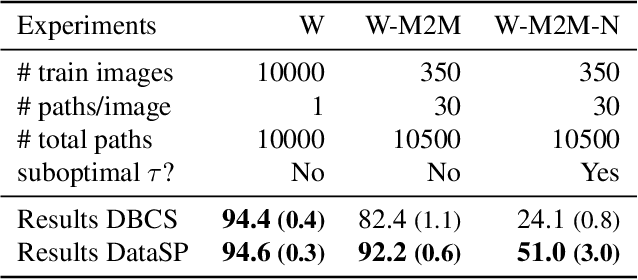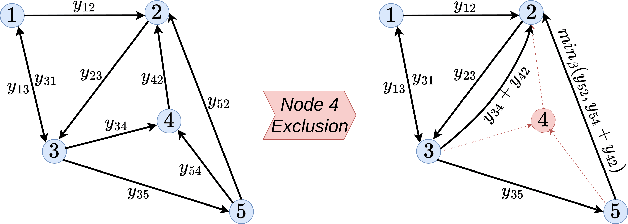Alan A. Lahoud
Learning Solutions of Stochastic Optimization Problems with Bayesian Neural Networks
Jun 05, 2024Abstract:Mathematical solvers use parametrized Optimization Problems (OPs) as inputs to yield optimal decisions. In many real-world settings, some of these parameters are unknown or uncertain. Recent research focuses on predicting the value of these unknown parameters using available contextual features, aiming to decrease decision regret by adopting end-to-end learning approaches. However, these approaches disregard prediction uncertainty and therefore make the mathematical solver susceptible to provide erroneous decisions in case of low-confidence predictions. We propose a novel framework that models prediction uncertainty with Bayesian Neural Networks (BNNs) and propagates this uncertainty into the mathematical solver with a Stochastic Programming technique. The differentiable nature of BNNs and differentiable mathematical solvers allow for two different learning approaches: In the Decoupled learning approach, we update the BNN weights to increase the quality of the predictions' distribution of the OP parameters, while in the Combined learning approach, we update the weights aiming to directly minimize the expected OP's cost function in a stochastic end-to-end fashion. We do an extensive evaluation using synthetic data with various noise properties and a real dataset, showing that decisions regret are generally lower (better) with both proposed methods.
DataSP: A Differential All-to-All Shortest Path Algorithm for Learning Costs and Predicting Paths with Context
May 08, 2024



Abstract:Learning latent costs of transitions on graphs from trajectories demonstrations under various contextual features is challenging but useful for path planning. Yet, existing methods either oversimplify cost assumptions or scale poorly with the number of observed trajectories. This paper introduces DataSP, a differentiable all-to-all shortest path algorithm to facilitate learning latent costs from trajectories. It allows to learn from a large number of trajectories in each learning step without additional computation. Complex latent cost functions from contextual features can be represented in the algorithm through a neural network approximation. We further propose a method to sample paths from DataSP in order to reconstruct/mimic observed paths' distributions. We prove that the inferred distribution follows the maximum entropy principle. We show that DataSP outperforms state-of-the-art differentiable combinatorial solver and classical machine learning approaches in predicting paths on graphs.
 Add to Chrome
Add to Chrome Add to Firefox
Add to Firefox Add to Edge
Add to Edge